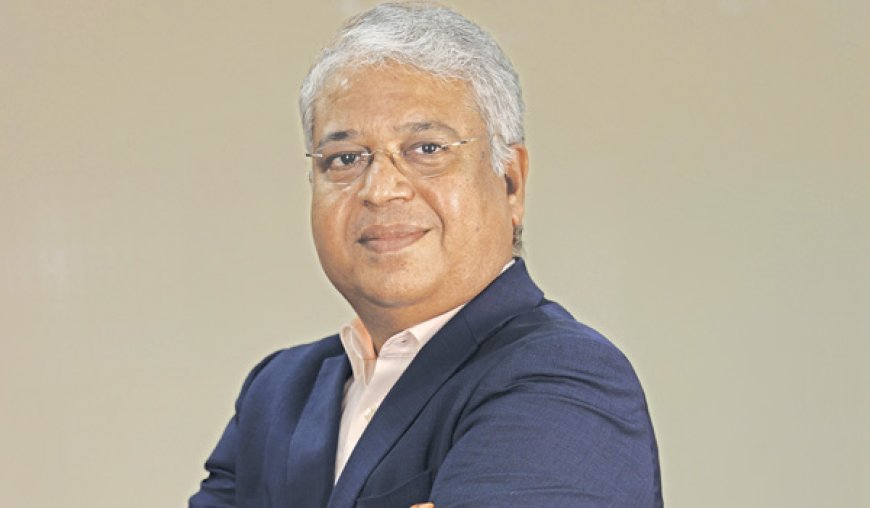As we have transitioned production, our exports have surged, reaching various countries, including Germany.
V.G. Sakthikumar, CMD, Schwing Stetter India What’s your outlook for 2024? In comparing the potential of 2024 to the prior year, my perspective has shifted significantly since my involvement with Excon. Initially, I might have hesitated to predict a similar

What’s your outlook for 2024?
In comparing the potential of 2024 to the prior year, my perspective has shifted significantly since my involvement with Excon. Initially, I might have hesitated to predict a similar level of success to 2023. However, my current experience has been quite heartening. Witnessing the immense support from customers, who readily engage with us, swiftly make transactions, and head back to their destinations without exploring alternatives, has been overwhelming. While this trend doesn’t encompass everything, it certainly bolsters our confidence for a potentially prosperous 2024.
Previous years boasted remarkable growth rates—50%, 59%, and 35% year on year. Yet, our expectations for this year lean more towards a moderated growth trajectory. We anticipate facing challenges, particularly in two quarters, coinciding with the monsoon period, a time when business traditionally subsides. This year, the impact may be compounded by ongoing elections, likely affecting our business performance during that period.
Nonetheless, our continuous order intake provides optimism, carrying us through the initial and final quarters—from January to December. The conclusion of the year, particularly October through December, is anticipated to be robust as things settle. The ongoing infrastructure investments in the country seem irreversible, with a substantial gap that the government is committed to closing swiftly. Waiting for long-term growth isn’t a luxury our country can afford; we must grow rapidly within a condensed timeframe.
Schwing Stetter is prepared to confront these challenges by investing in the future, expanding capacity, training our workforce, and launching new products. This year alone, we celebrated 25 years with the launch of 25 new products. With these strategies in place, I hold an optimistic outlook for the upcoming year’s outcome.
What are your initiatives in training and skilling?
While successfully meeting ICEMA’s target of 2500-3000 certifications, we’ve extended our reach far beyond. Our collaborations with four state governments – Assam, Uttarakhand, Tamil Nadu, and another state – signify our broader engagement.
For instance, in Tamil Nadu, each district is tasked with identifying priority training topics or skills, wherein the government extends support. Our plant is strategically situated in the underprivileged district of Tiruvannamalai. We’re actively persuading the government to endorse machine operations originating from this region. Similar to how Tiruvannamalai historically provided manpower for construction in Bangalore, we aim to uplift individuals here from daily wage roles to machine operators.
In Assam, our negotiations with the government have secured access to government-owned buildings and classrooms. This partnership ensures an equitable relationship where the government’s assets are utilized for our training initiatives.
Meanwhile, in Uttarakhand, we’ve identified and associated with four polytechnic institutions to train young individuals, preparing them for roles in tunnel operations, especially crucial given the ongoing tunnel projects like the Chardham tunnels. Discussions are ongoing with additional states like UP, signaling our expanding footprint.
Shifting focus to our internal operations, we’ve established two welding schools facilitating hands-on training for prospective employees. Upon successful training completion, some join our factory floor workforce, while others, equipped with skills, venture into job markets. This initiative aligns partially with our Corporate Social Responsibility (CSR).
Furthermore, we’ve opened avenues for diploma and engineering graduates to join our ranks. Those entering our design department receive postgraduate support, while diploma/engineering hires are guided towards becoming Bachelor of Engineers. Notably, we’ve collaborated with Vellore Institute of Technology (VIT) to conduct classes within our factory premises. This partnership grants our employees certificates from a prestigious institution, enhancing their career prospects significantly.
Apart from skill enhancement initiatives, we’re deeply invested in leadership development. Our LMI program, facilitated by a US-based organization, has groomed 240 employees as future leaders. Being chosen as the global client for 2023, we showcased our success at a prestigious event in Las Vegas, where our approach and results garnered acclaim from representatives across 150 countries. However, I believe the success isn’t solely attributed to our company but also reflects the inherent capabilities of Indians, which left a lasting impression on the international audience.
How are you maintaining the scalability to meet the demands for these products together?
Let me take you through our journey: back in the late 90s, the fastest 30 cubic meter and 60 cubic meter batching plants were imported from Germany to India. By 2000, around 20% of the steel parts were being fabricated in India. However, that percentage has since increased. By 2015, the entire production was localized, proudly made in India. The most recent development? We’re now manufacturing these plants originally designed in Germany, right here in India.
As we’ve transitioned production, our exports have surged, reaching various countries, including Germany. The evolution of our processes dictates that everything we introduce undergoes this transformation. Speaking from the perspective of someone deeply involved in ICEMA, we’re projecting a threefold growth in the domestic market. This expansion doesn’t just benefit our local market; it spills over into our exports. When we can produce substantial volumes at competitive prices, it naturally attracts other buyers, further fueling our export growth.
What’s your message to your customers as well as the industry?
Our Message is for the customers: We’re committed to fulfilling your needs, whatever they may be. Whether it’s creating a new product or addressing any existing shortcomings, we’re dedicated to surpassing expectations. The challenges brought by COVID highlighted the importance of e-commerce in our transactions. We’d love to showcase a demonstration of how seamlessly our parts orders move—similar to tracking an Amazon delivery.
Hits: 9








